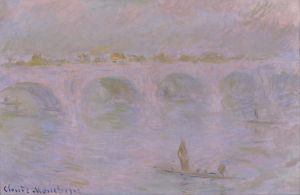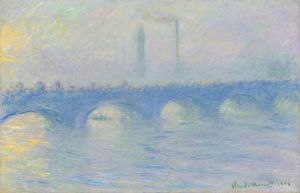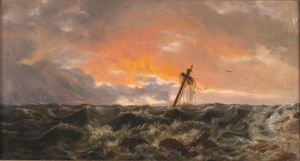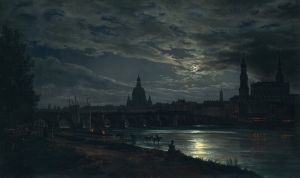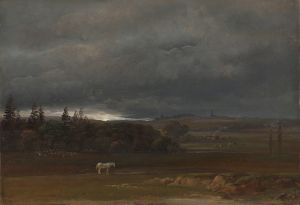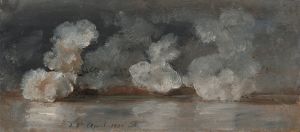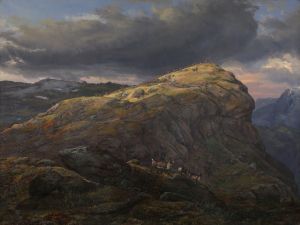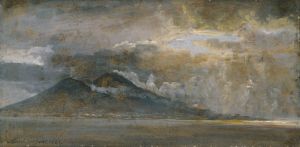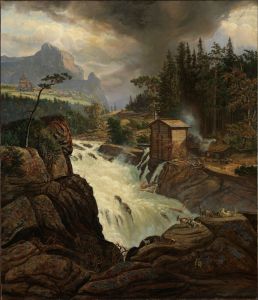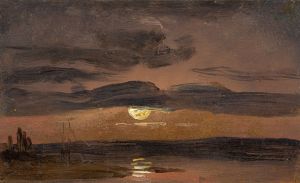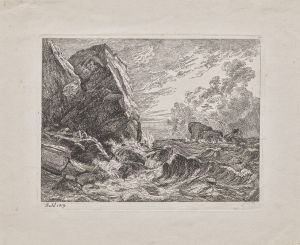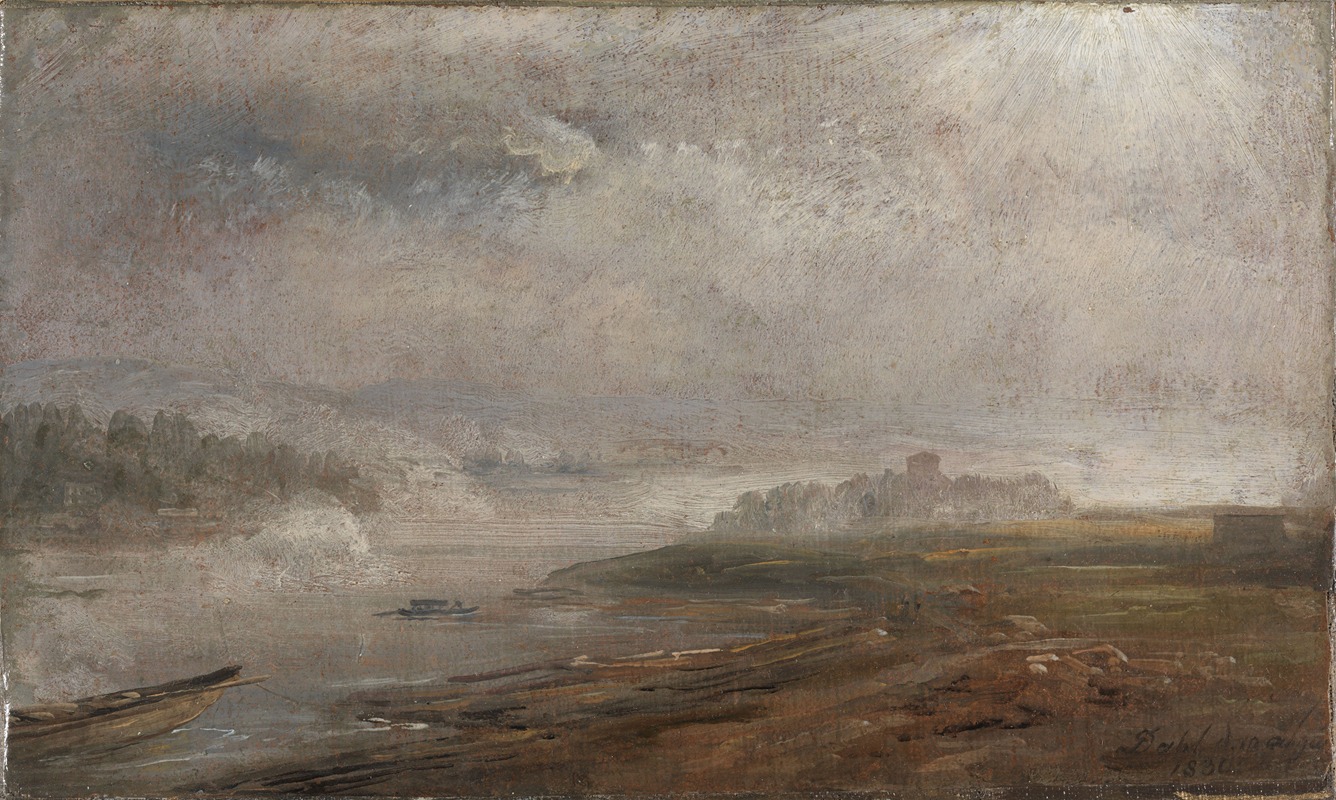
The Elbe on a foggy Morning
A hand-painted replica of Johan Christian Dahl’s masterpiece The Elbe on a foggy Morning, meticulously crafted by professional artists to capture the true essence of the original. Each piece is created with museum-quality canvas and rare mineral pigments, carefully painted by experienced artists with delicate brushstrokes and rich, layered colors to perfectly recreate the texture of the original artwork. Unlike machine-printed reproductions, this hand-painted version brings the painting to life, infused with the artist’s emotions and skill in every stroke. Whether for personal collection or home decoration, it instantly elevates the artistic atmosphere of any space.
Johan Christian Dahl, a prominent Norwegian painter, is often regarded as a key figure in the development of Romantic landscape painting in the 19th century. His work, "The Elbe on a Foggy Morning," exemplifies his mastery in capturing the sublime and transient qualities of nature, a hallmark of Romanticism. Although specific details about this particular painting are scarce, Dahl's broader body of work provides context for understanding his artistic approach and thematic interests.
Born in 1788 in Bergen, Norway, Dahl was a pioneering figure in Norwegian art, often credited with laying the groundwork for the national romantic movement in Norway. He studied at the Royal Danish Academy of Fine Arts in Copenhagen, where he was influenced by the Danish Golden Age of painting. Dahl's work is characterized by a deep appreciation for nature, a focus on atmospheric effects, and a commitment to depicting the natural world with both accuracy and emotional depth.
"The Elbe on a Foggy Morning" likely reflects Dahl's fascination with the interplay of light and atmosphere, a common theme in his landscapes. The Elbe River, which flows through central Europe, including Germany and the Czech Republic, would have provided a picturesque setting for Dahl's exploration of fog and light. Fog, as a natural phenomenon, offers a unique challenge and opportunity for artists, as it obscures and reveals elements of the landscape, creating a sense of mystery and depth. Dahl's ability to render such atmospheric conditions with precision and sensitivity is evident in many of his works.
Throughout his career, Dahl traveled extensively across Europe, drawing inspiration from the diverse landscapes he encountered. His travels included significant time in Germany, where he became associated with the Dresden Academy of Fine Arts. Dresden, situated along the Elbe River, was a cultural hub during Dahl's time and played a crucial role in his artistic development. The city's rich artistic environment and the surrounding landscapes undoubtedly influenced Dahl's work, including his depictions of the Elbe River.
Dahl's paintings are noted for their meticulous attention to detail and their ability to convey the emotional resonance of the natural world. He often employed a palette that captured the subtle variations of light and color found in nature, enhancing the mood and atmosphere of his scenes. His landscapes are not merely topographical representations but are imbued with a sense of the sublime, reflecting the Romantic era's fascination with nature's power and beauty.
In addition to his artistic achievements, Dahl was an influential teacher and mentor. He played a significant role in the education of future generations of artists, including the renowned Norwegian painter Thomas Fearnley. Dahl's legacy is evident in the continued appreciation of his work and his impact on the development of landscape painting in Norway and beyond.
While specific information about "The Elbe on a Foggy Morning" is limited, understanding Dahl's broader oeuvre and his approach to landscape painting provides valuable insight into the themes and techniques that likely characterize this work. His ability to capture the ephemeral qualities of nature continues to resonate with audiences, securing his place as a pivotal figure in the history of art.





